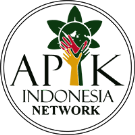PERENCANAAN PENGELOLAAN SAMPAH DI JALUR PENDAKIAN TAMAN NASIONAL GUNUNG RINJANI
DOI:
10.29303/jbl.v2i1.99Published:
2019-03-01Issue:
Vol. 2 No. 1 (2019)Keywords:
Waste, planning, TNGRArticles
Downloads
How to Cite
Downloads
Metrics
Abstract
There is four hiking track in the Gunung Rinjani National Park area, namely Senaru, Sembalun, Timbanuh, and Aik Berik. In 2016 there were 93,018 visitors to Mount Rinjani National Park. A large number of a visitor can be a potential because it contributes to state revenues, but on the other side, the presence of waste become manager's homework because the higher number of visitor occurs waste also getting bigger. This study aim is to develop a waste management plan in the hiking track of Mount Rinjani National Park.
Â
References
[BSN] Badan Standarisasi Nasional. 1991. Operasional Pengelolaan Sampah Perkotaan SNI–T-12-1991-03. Jakarta. BSN.
[BSN] Badan Standarisasi Nasional. 2002. Tata cara teknik operasional pengeloaan sampah perkotaan SNI 19-2454-2002. Jakarta. BSN.
IUCN. 2007. Common Guidelines and Methodology for Rapid Field Assessment - Tsunami Damage to Terrestrial Coastal Ecosystems. United Kingdom. IUCN Publications Services Unit.
Hadiwiyoto, S. 1983. Penanganan dan Pemanfaatan Sampah. Jakarta. Yayasan Idayu.
Kementerian Negara Lingkungan Hidup. 2008. Undang Undang Republik Indonesia No.18 Tahun 2008 tentang Pengelolan Sampah. Jakarta.
Megaiswari, N. 2016. Manfaat ekonomi dan strategi pengelolaan sampah perkotaan. [Skripsi] Fakultas ekonomi manajemen Institut Pertanian Bogor.
Nurdiani N. 2014. Teknik Sampling Snowball Dalam Penelitian Lapangan. Comtech. 5 (2): 1110 – 1118.
Rangkuti, F. 2009. Analisis SWOT Teknik Membedah kasus Bisnis. Jakarta. Gramedia pustaka Utama.
Sugiyono. 2010. Metode Penelitian Kuantitatif Kualitatif dan R&D. Bandung. Alfabeta.
Utari, R. K., Pearce, D. & Batemen, I. 2006. Environmental Economics: An Elementary Introduction. Hertfords. Harvester Wheatsheaf.
Author Biography
Maiser Syaputra, Jurusan Kehutanan, Fakultas Pertanian, Universitas Mataram
License
The Authors submitting a manuscript has understood that if accepted for publication on Jurnal Belantara, the copyright of the article shall be assigned to Jurnal Belantara of the Forest Study Program University of Mataram as the publisher of the journal. Copyright encompasses rights to reproduce and deliver the article in all forms and media, including reprints, photographs, microfilms, and any other similar reproductions, as well as translations.
Jurnal Belantara of the Forest Study Program University of Mataram and the Editors make every effort to ensure that no wrong or misleading data, opinions, or statements be published in the journal. In any way, the contents of the articles and advertisements published in Jurnal Belantara are the sole responsibility of their respective authors and advertisers.
We strongly encourage that manuscripts be submitted to the online journal system in http://belantara.unram.ac.id/index.php/JBL/index. Authors are required to create an account and submit the manuscripts online. For submission inquiries, please follow the submission instructions on the website. If the author has any problems with the online submission, please contact Editorial Office at the following email: [email protected]
Contributors are responsible for obtaining permission to reproduce any materials, including photographs and illustrations, for which they do not hold the copyright and for ensuring that the appropriate acknowledgments are included in the manuscript.
Users of this website will be licensed to use materials from this website following the Creative Commons Attribution 4.0 International License. No fees charged. Please use the materials accordingly.











